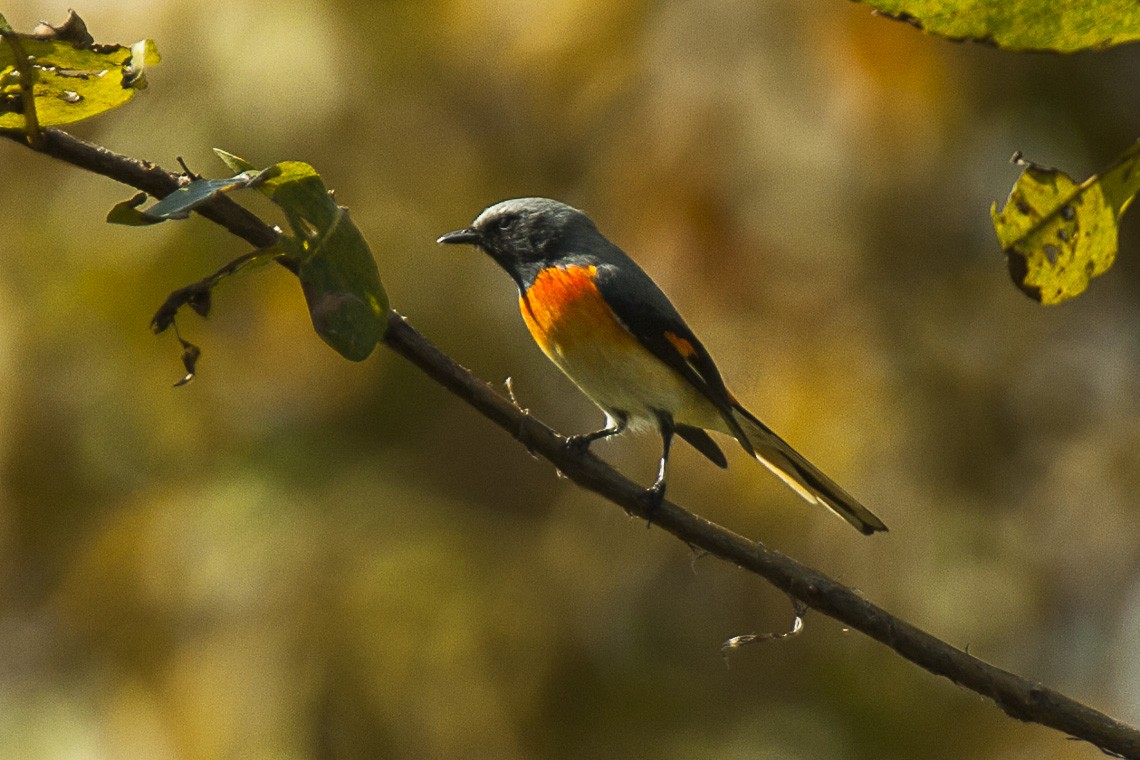Small Minivet
A species of Minivets Scientific name : Pericrocotus cinnamomeus Genus : Minivets
Small Minivet, A species of Minivets
Botanical name: Pericrocotus cinnamomeus
Genus: Minivets
Content
Description General Info
 Photo By Francesco Veronesi , used under CC-BY-SA-2.0 /Cropped and compressed from original
Photo By Francesco Veronesi , used under CC-BY-SA-2.0 /Cropped and compressed from original Description
The small minivet is 16 cm long with a strong dark beak and long wings. The male differs from most other common minivets by having grey, not glossy black, upperparts and head, and orange underparts, fading to yellow on the belly, orange tail edges, rump and wing patches. The female is grey above, with yellow underparts (including the face), tail edges, rump and wing patches. There is much racial variation. The male P. c. pallidus of the northwest Indian subcontinent is pale grey above, with the underparts whitish except on the throat and flanks, whereas the male P. c. malabaricus of peninsular and southern India is darker above, has more extensive scarlet below. The female of the southern race is also brighter yellow below. 
Size
16 cm
Colors
Black
Yellow
Gray
Orange
Nest Placement
Tree
Feeding Habits
Small Minivet primarily feed on insects, capturing them mid-flight or while perched on trees. They showcase aerial hunting and agile foraging.
Habitat
Small Minivet typically resides in a variety of wooded habitats including thorn jungles, scrublands, deciduous and evergreen forests, and mangroves. They are adaptable to human-altered landscapes and can often be found in orchards and cultivated areas near villages. Small Minivet predominantly prefers open woodland environments compared to their closely related species. Their habitats range from sea level to altitudes of up to 1600 meters across broader geographical regions that encompass primarily tropical and subtropical zones.
Dite type
Insectivorous
General Info
Feeding Habits
Bird food type
Behavior
The small minivet is a widespread and common resident breeding bird in thorn jungle and scrub. The nest is a cup-like structure into which two to four spotted eggs are laid and incubated by the female. This minivet catches insects in trees by flycatching or while perched. The small minivet will form small flocks. Its call is a high, thin swee swee swee. 
Species Status
Not globally threatened.
Scientific Classification
Phylum
Chordates Class
Birds Order
Perching birds Family
Cuckoo-shrikes Genus
Minivets Species
Small Minivet